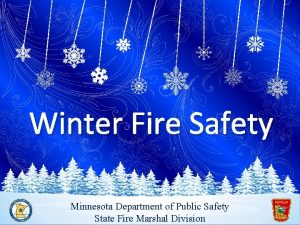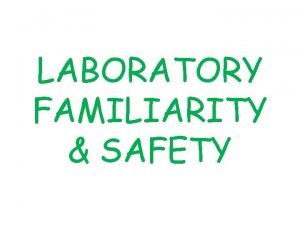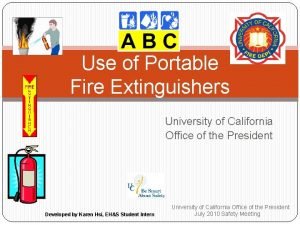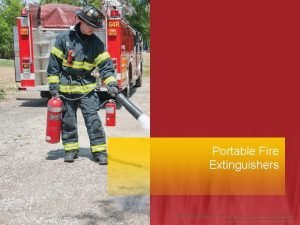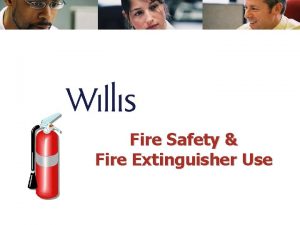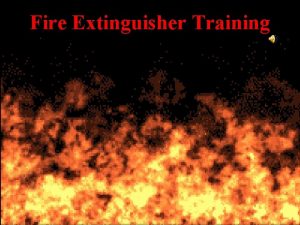Station 1 Fire Extinguisher To use a fire




- Slides: 4

Station 1: Fire Extinguisher To use a fire extinguisher, just remember the acronym “PASS”. You may pick up the extinguisher and practice using it but DO NOT REMOVE THE PIN!!! P: Pull Pin A: Aim at base of fire S: Squeeze handle S: Sweep back and forth Preventing Fires: 1. 2. Do not light fires near flammable chemicals or material. Do not play with matches, lighters, or hot plates. 3. Pull hair back into ponytail. 4. Do not wear loose or baggy clothing. Responding to Fires: 1. Inform the teacher immediately. 2. Use the fire extinguisher to put out fires, but do NOT use on humans. 3. Suffocate the fire by covering it with a non-flammable container or use the fire blanket.

Station 2: Dissection There are two correct ways to hold a scalpel. Practice one technique using a scalpel and a banana; 1 cut per student Technique 1 Technique 2 Preventing Injuries: 1. 2. 3. Always where gloves when handling a scalpel or sharp object. Properly hold scalpel or other sharp objects. Do not play with the scalpel or other sharp objects. Responding to Injuries: 1. Inform the teacher immediately. 2. Wash the wound or cut with soap and water. 3. Use the first aid kit stop the bleeding or wrap with paper towel. 4. Go to the nurse if the injury is severe.

Station 3: Broken Glass Broken glass is very sharp. In fact, it can be as sharp as a scalpel. Follow steps 1 and 2 in the “Responding to Broken Glass” box using a dustpan. Preventing Injuries: 1. Wear goggles when handling glassware. 2. When possible, wear gloves when handling glassware. 3. Do not place glassware near edge of table or counter. 4. Walk slowly and hold glassware with two hands. 5. Never pick up broken glass with hands. Responding to Broken Glass: 1. Inform the teacher immediately; do not clean up broken glass unless teacher gives you permission. 2. Place all broken glass in the broken glass box; never put glass in trash or recycling bin. 3. If you cut yourself, inform the teacher, wash the wound with soap and water, and stop bleeding using first aid kit or see nurse.

Station 4: Gloves and Aprons Gloves and aprons create a barrier and prevent chemicals or other dangerous substances from getting on your skin. Put on gloves and an apron and gently pick up the mystery object in the container. Preventing Injuries: 1. Wear gloves and an apron when working with dangerous chemicals. 2. Hold all containers using both hands and walk slowly. 3. Wear long pants, long-sleeve shirts, and closed-toe shoes. Responding to Chemical Spills: 1. Inform the teacher immediately; do not try to clean spill unless the teacher gives permission. 2. Wash your skin or eyes for at leas 15 minutes using the shower, eyewash, or sink. 3. Go to nurse if area becomes red, itchy, or swollen.
